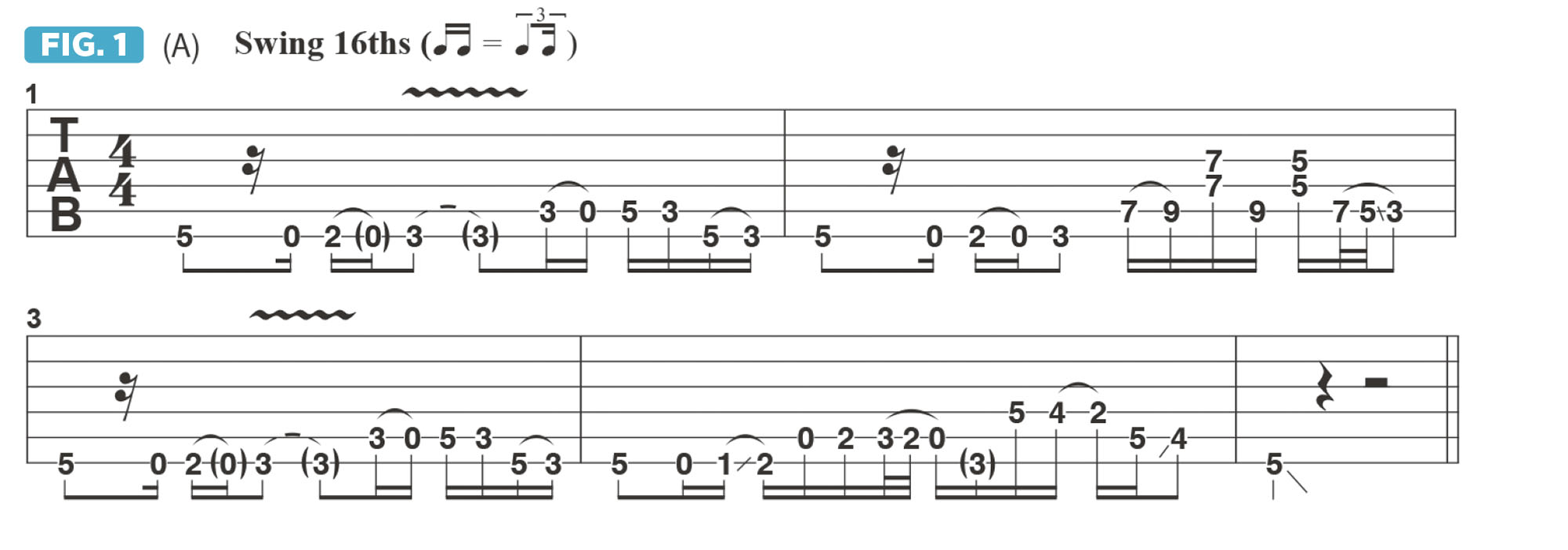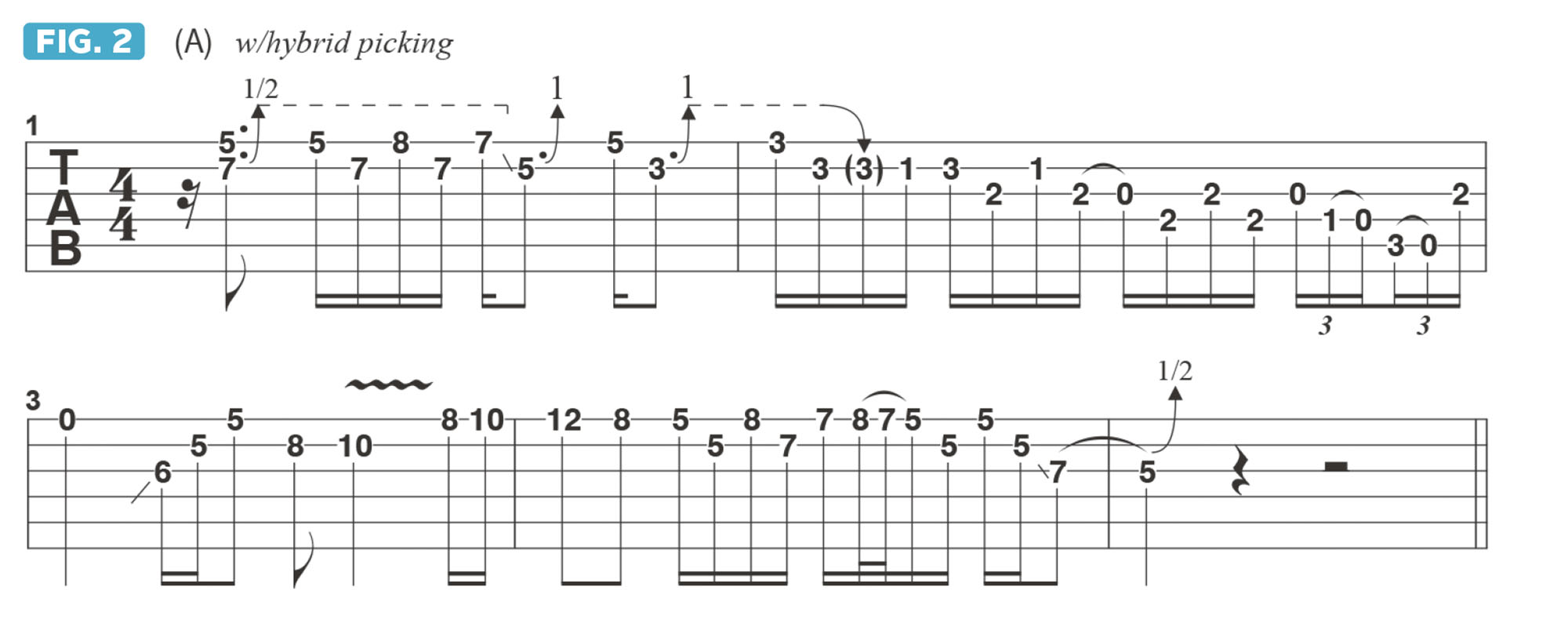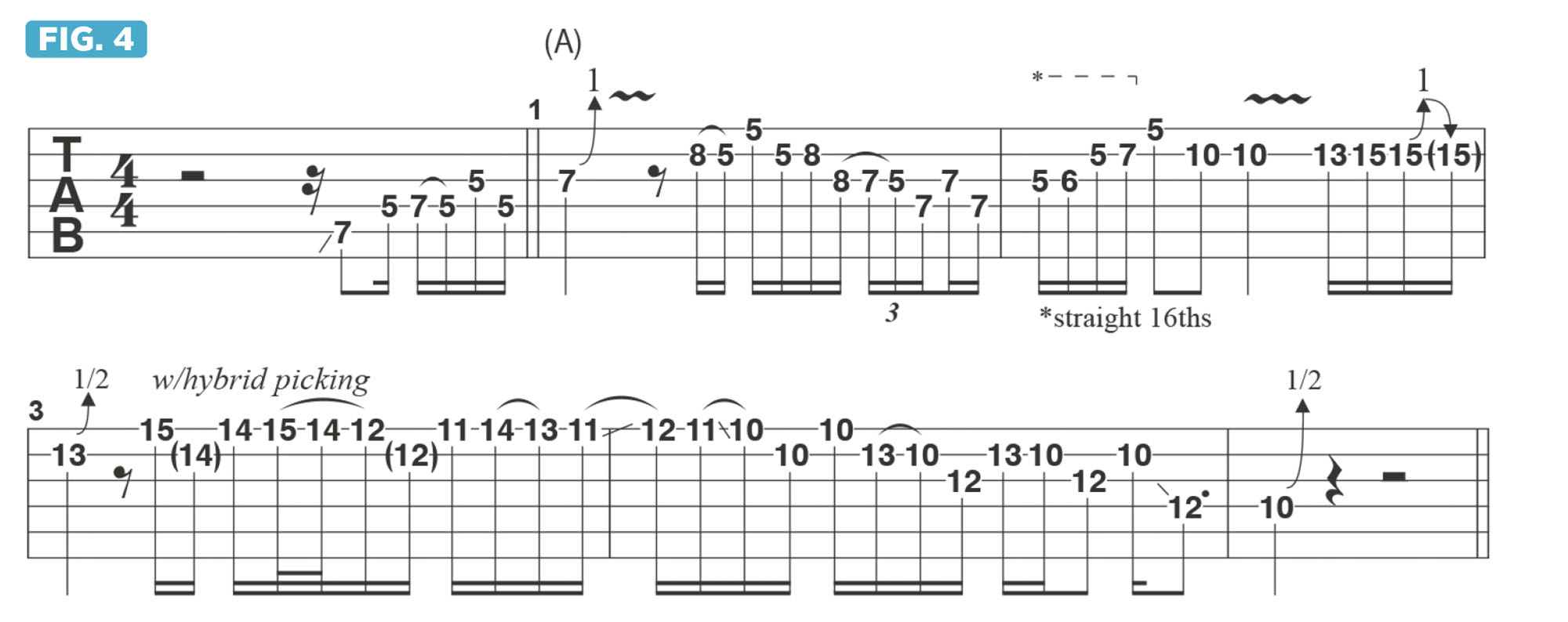
An essential mindset when soloing is to strive to make your lines sit as deeply “in the pocket” and as “locked into the groove” as possible. All of our favorite players developed the ability to communicate a deep connection to the groove while soloing, which fortifies their playing with greater expressiveness and musicality.
A great way to start developing this attribute is to devise a vamp that has a nice, deep groove to it. Once you’ve got a rock-solid riff to play over, you can then experiment with different soloing approaches over it, striving to connect and tie the articulations and rhythmic syncopations of your phrases to the pocket of the vamp.
Let’s create a vamp by first selecting a tempo, groove and key. In this first example, I’ve chosen a mid-tempo groove, around 88 beats per minute, played with a rhythmic syncopation based on “swinging” 16th notes.
This means that each pair of 16th notes is felt like a 16th-note triplet (three notes) with the first and second notes tied together, resulting in a lopsided “long-short” feel. This type of groove is the foundation for the Shuggie Otis classic, Me and My Woman.

Figure 1 illustrates this swinging vamp in the key of A: an A root note is sounded on beat 1, followed by a 16th-note theme played in a syncopated rhythm.
This four-bar phrase is based on the A Mixolydian mode (A, B, C#, D, E, F#, G), which is the mode that best conveys a dominant 7th tonality, in this case an implied A7 sound (A, C#, E, G).
When playing this riff, strive to keep your pick-hand moving in a constant down-up-down-up motion in the rhythm of the 16th notes, even through any rests, held notes or legato articulations.

Figure 2 presents the first of two four-bar solos. I begin this first one with an oblique bend on the top two strings, sounded by striking the B and high E strings together then bending the F# note on B string up a half-step to G. I then hold the bend while alternating between striking notes on these two strings.
I employ hybrid picking here, sounding the B-string notes with the pick while fingerpicking those on the high E string with my ring finger.

On beat 3, the oblique bend shifts down a whole step to the 5th fret, and on beat 4 it shifts down another whole step to the 3rd fret, followed by a lick based on the A blues scale (A, C, D, Eb, E, G).
Figure 3 breaks down the lick to highlight the position shifts. At the end of bar 2 into bar 3, I use a “rolling” technique with my pick hand, dragging the pick in a downward motion across all the strings and then fingerpicking the high E string.

Figure 4 offers another solo idea, this time starting with a pickup to beat 1 of bar 1, with lines based primarily on the A blues scale. In bar 3 into bar 4, I incorporate chromaticism on the high E string with an emphasis on trying to make the 16th notes swing as much as possible.







